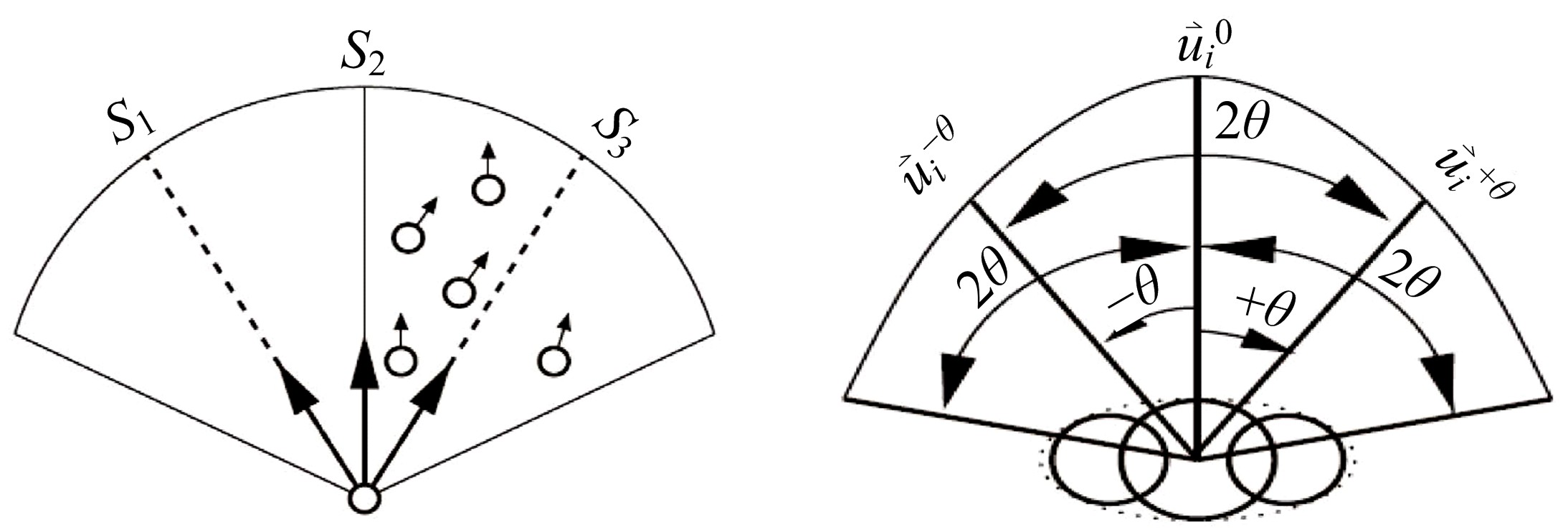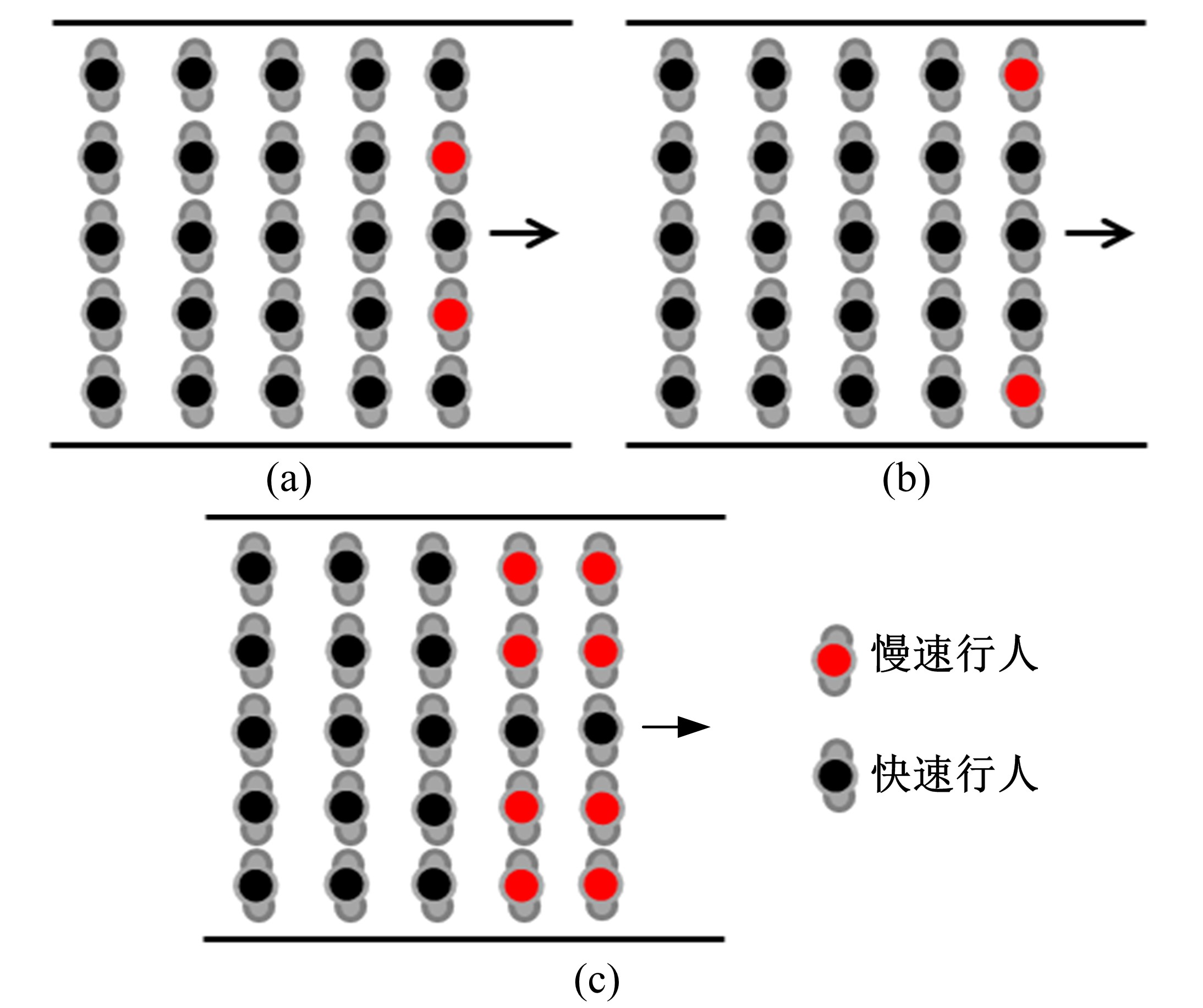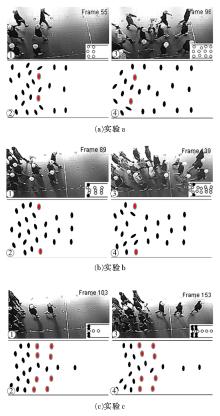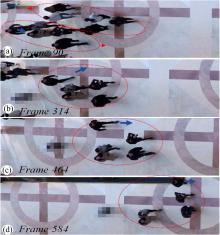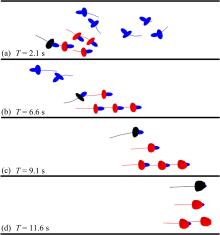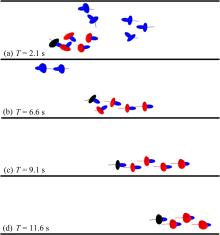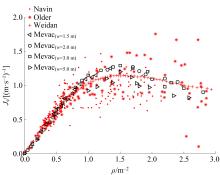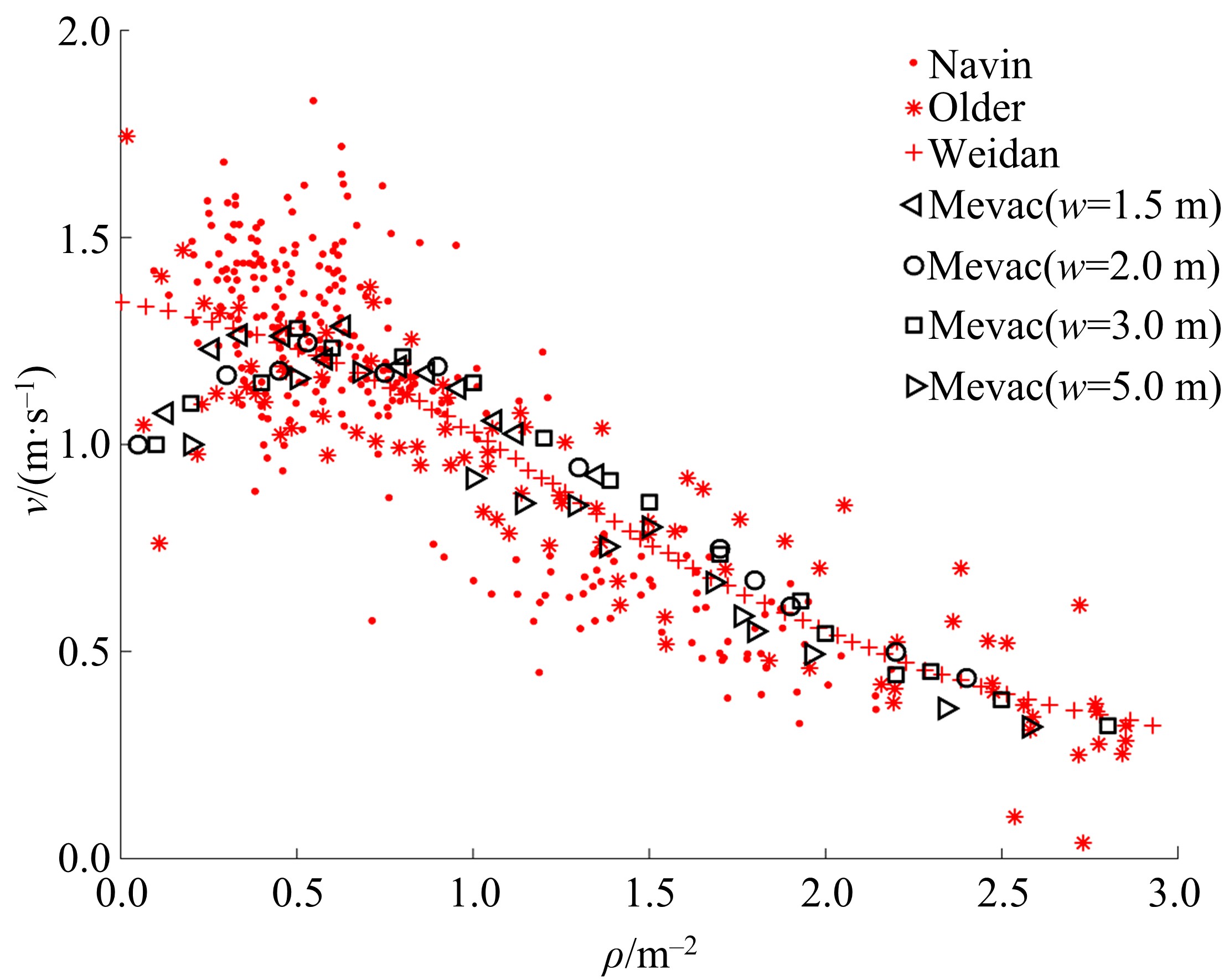Journal of Jilin University(Engineering and Technology Edition) ›› 2020, Vol. 50 ›› Issue (2): 549-556.doi: 10.13229/j.cnki.jdxbgxb20181163
An optimization⁃based evacuation model considering pedestrian heterogeneity
Da-wei ZHANG1( ),Hai-tao ZHU1,2
),Hai-tao ZHU1,2
- 1.College of Mechanical and Electrical Engineering, Harbin Engineering University, Harbin 150001, China
2.College of Shipbuilding Engineering, Harbin Engineering University, Harbin 150001, China
CLC Number:
- U491
| 1 | 马剑, 王若成, 邱谦谦. 紧急情况下城市轨道隧道客流疏散配流模型研究[J]. 铁道学报, 2016, 38( 6): 8- 14. |
| Ma Jian, Wang Ruo-cheng, Qiu Qian-qian. Passenger assignment model for emergency evacuation in metro rail tunnels[J]. Journal of the China Railway Sciety, 2016, 38( 6): 8- 14. | |
| 2 | 岳昊, 何栋梁, 张滨雅, 等. 行人步行设施空间疏散特征指标[J]. 哈尔滨工业大学学报, 2017, 49( 9): 17- 24. |
| Yue Hao, He Dong-liang, Zhang Bin-ya, et al. Spatial characteristics indexes of pedestrian walking facilities for evacuation[J]. Journal of Harbin Institute of Technology, 2017, 49( 9): 17- 24. | |
| 3 | Helbing D, Molnar P. Social force model for pedestrian dynamics[J]. Physical Review E, 1995, 51( 5): 4282- 4286. |
| 4 | Hoogendoorn S P, Bovy P H L. Dynamic user-optimal assignment in continuous time and space[J]. Transportation Research Part B: Methodological, 2004, 38( 7): 571- 592. |
| 5 | 苏书杰, 何露. 步行交通规划交叉路口行人瞬时动态拥塞疏散模型[J]. 吉林大学学报: 工学版, 2018, 48( 2): 440- 447. |
| Su Shu-jie, He Lu. Transient dynamic congestion evacuation model of pedestrian at walk traffic planning crossroads[J]. Journal of Jilin University (Engineering and Technology Edition), 2018, 48( 2): 440- 447. | |
| 6 | 周继彪, 陈红, 闫彬, 等. 基于云模型的地铁换乘枢纽拥挤度辨识方法[J]. 吉林大学学报: 工学版, 2016, 46( 1): 100- 107. |
| Zhou Ji-biao, Chen Hong, Yan Bin, et al. Identification of pedestrian crowding degree in metro transfer hub based on normal cloud model[J]. Journal of Jilin University (Engineering and Technology Edition), 2016, 46 ( 1): 100- 107. | |
| 7 | Smith A, James C, Jones R, et al. Modelling contra-flow in crowd dynamics DEM simulation[J]. Safety Science, 2009, 47( 3): 395- 404. |
| 8 | Parisi D R, Gilman M, Moldovan H. A modification of the social force model can reproduce experimental data of pedestrian flows in normal conditions[J]. Physica A: Statistical Mechanics and its Applications, 2009, 388( 17): 3600- 3608. |
| 9 | Heliövaara S, Korhonen T, Hostikka S, et al. Counterflow model for agent-based simulation of crowd dynamics[J]. Building and Environment, 2012, 48( 1): 89- 100. |
| 10 | Zhang D, Zhu H, Du L, et al. An optimization-based overtaking model for unidirectional pedestrian flow[J]. Physics Letters A, 2018, 382( 44): 3172- 3180. |
| 11 | Yuen J K K, Lee E W M. The effect of overtaking behavior on unidirectional pedestrian flow[J]. Safety Science, 2012, 50( 8): 1704- 1714. |
| 12 | Moussaïd M, Nelson J D. Simple heuristics and the modelling of crowd behaviours[C]∥ Pedestrian and Evacuation Dynamics 2012, Cham: Springer, 2014: 75- 90. |
| 13 | Moussaïd M, Helbing D, Theraulaz G. How simple rules determine pedestrian behavior and crowd disasters[J]. Proceedings of the National Academy of Sciences, 2011, 108( 17): 6884- 6888. |
| 14 | Saberi M, Aghabayk K, Sobhani A. Spatial fluctuations of pedestrian velocities in bidirectional streams: exploring the effects of self-organization[J]. Physica A: Statistical Mechanics and its Applications, 2015, 434: 120- 128. |
| 15 | Tao Y, Dong L. Investigation on lane-formation in pedestrian flow with a new cellular automaton model[J]. Journal of Hydrodynamics, 2016, 28( 5): 794- 800. |
| 16 | Nagatani T. Freezing transition in bi-directional CA model for facing pedestrian traffic[J]. Physics Letters A, 2009, 373( 33): 2917- 2921. |
| 17 | Li X, Guo F, Kuang H, et al. Effect of psychological tension on pedestrian counter flow via an extended cost potential field cellular automaton model[J]. Physica A: Statistical Mechanics and its Applications, 2017, 487: 47- 57. |
| 18 | Fu L, Song W, Lyu W, et al. Simulation of emotional contagion using modified SIR model: a cellular automaton approach[J]. Physica A: Statistical Mechanics and its Applications, 2014, 405: 380- 391. |
| 19 | Batty M. Predicting where we walk[J]. Nature, 1997, 388( 6637): 19- 20. |
| 20 | Feliciani C, Nishinari K. An improved cellular automata model to simulate the behavior of high density crowd and validation by experimental data[J]. Physica A: Statistical Mechanics and its Applications, 2016, 451: 135- 148. |
| 21 | Shimura K, Ohtsuka K, Vizzari G, et al. Mobility analysis of the aged pedestrians by experiment and simulation[J]. Pattern Recognition Letters, 2014, 44: 58- 63. |
| 22 | Seyfried A, Schadschneider A. Fundamental diagram and validation of crowd models[C]∥ International Conference on Cellular Automata. Berlin, Heidelberg: Springer, 2008: 563- 566. |
| 23 | Zhang J, Klingsch W, Schadschneider A, et al. Ordering in bidirectional pedestrian flows and its influence on the fundamental diagram[J/OL].[ 2018-09-22]. |
| 24 | Navin F P, Wheeler R J. Pedestrian flow characteristics[J]. Traffic Engineering, Inst Traffic Engr, 1969, 19( 7): 30- 33, 36. |
| 25 | Older S J. Movement of pedestrians on footways in shopping streets[J]. Traffic Engineering & Control, 1968, 10( 4): 160- 163. |
| [1] | Hong-fei JIA,Xin-ru DING,Li-li YANG. Bi-level programming model for optimization design of tidal lane [J]. Journal of Jilin University(Engineering and Technology Edition), 2020, 50(2): 535-542. |
| [2] | Chao-ying YIN,Chun-fu SHAO,Xiao-quan WANG,Zhi-hua XIONG. Influence of built environment on commuting mode choice considering spatial heterogeneity [J]. Journal of Jilin University(Engineering and Technology Edition), 2020, 50(2): 543-548. |
| [3] | Yi-ming BIE,Kai JIANG,Ru-ru TANG,Lin-hong WANG,Xin-yu XIONG. Time of interval partition for traffic control at isolated intersection considering impacts of plan transition [J]. Journal of Jilin University(Engineering and Technology Edition), 2019, 49(6): 1844-1851. |
| [4] | Yuan-li GU, Yuan ZHANG, Xiao-ping RUI, Wen-qi LU, Meng LI, Shuo WANG. Short⁃term traffic flow prediction based on LSSVMoptimized by immune algorithm [J]. Journal of Jilin University(Engineering and Technology Edition), 2019, 49(6): 1852-1857. |
| [5] | Guo-zhu CHENG, Si-he FENG, Tian-jun FENG. Setting condition of on⁃street parking space occupied vehicle lane [J]. Journal of Jilin University(Engineering and Technology Edition), 2019, 49(6): 1858-1864. |
| [6] | Hai-bo LONG,Jia-qi YANG,Xue-yu ZHAO. Optimizing vehicles allocation of multimodal coordinated freight transport based on transshipment delay risks [J]. Journal of Jilin University(Engineering and Technology Edition), 2019, 49(5): 1492-1499. |
| [7] | Quan LIANG,Jian-cheng WENG,Wei ZHOU,Jian RONG. Stability identification of public transport commute passengers based on association rules [J]. Journal of Jilin University(Engineering and Technology Edition), 2019, 49(5): 1484-1491. |
| [8] | Wen⁃jing WU,Run⁃chao CHEN,Hong⁃fei JIA,Qing⁃yu LUO,Di SUN. Collaborative control method of vehicles in U⁃turn zone under environment of cooperative vehicle infrastructure system [J]. Journal of Jilin University(Engineering and Technology Edition), 2019, 49(4): 1100-1106. |
| [9] | Zhao⁃wei QU,Zhao⁃tian PAN,Yong⁃heng CHEN,Peng⁃fei TAO,Di SUN. Car⁃following model with improving safety distance based on optimal velocity model [J]. Journal of Jilin University(Engineering and Technology Edition), 2019, 49(4): 1092-1099. |
| [10] | Lei CHEN,Jiang⁃feng WANG,Yuan⁃li GU,Xue⁃dong YAN. Multi⁃source traffic data fusion algorithm based onmind evolutionary algorithm optimization [J]. Journal of Jilin University(Engineering and Technology Edition), 2019, 49(3): 705-713. |
| [11] | Qiang TU,Lin CHENG,Fen LIN,Chao SUN. Finding shortest path considering traveler′s risk attitude [J]. Journal of Jilin University(Engineering and Technology Edition), 2019, 49(3): 720-726. |
| [12] | Ning⁃bo CAO,Li⁃ying ZHAO,Zhao⁃wei QU,Yong⁃heng CHEN,Qiao⁃wen BAI,Xiao⁃lei DENG. Social force model considering bi⁃direction pedestrian slipstreaming behavior [J]. Journal of Jilin University(Engineering and Technology Edition), 2019, 49(3): 688-694. |
| [13] | Chao⁃ying YIN,Chun⁃fu SHAO,Xiao⁃quan WANG. Influence of urban built environment on car commuting considering parking availability [J]. Journal of Jilin University(Engineering and Technology Edition), 2019, 49(3): 714-719. |
| [14] | Qiao⁃wen BAI,Zhao⁃wei QU,Yong⁃heng CHEN,Shuai XIONG,Chu⁃qing TAO. Modeling on trajectories of through vehicles with an unprotected left⁃turn phase under non⁃strict priority [J]. Journal of Jilin University(Engineering and Technology Edition), 2019, 49(3): 673-679. |
| [15] | CHEN Yong-heng,LIU Fang-hong,CAO Ning-bo. Analysis of conflict factors between pedestrians and channelized right turn vehicles at signalized intersections [J]. Journal of Jilin University(Engineering and Technology Edition), 2018, 48(6): 1669-1676. |
|
||

